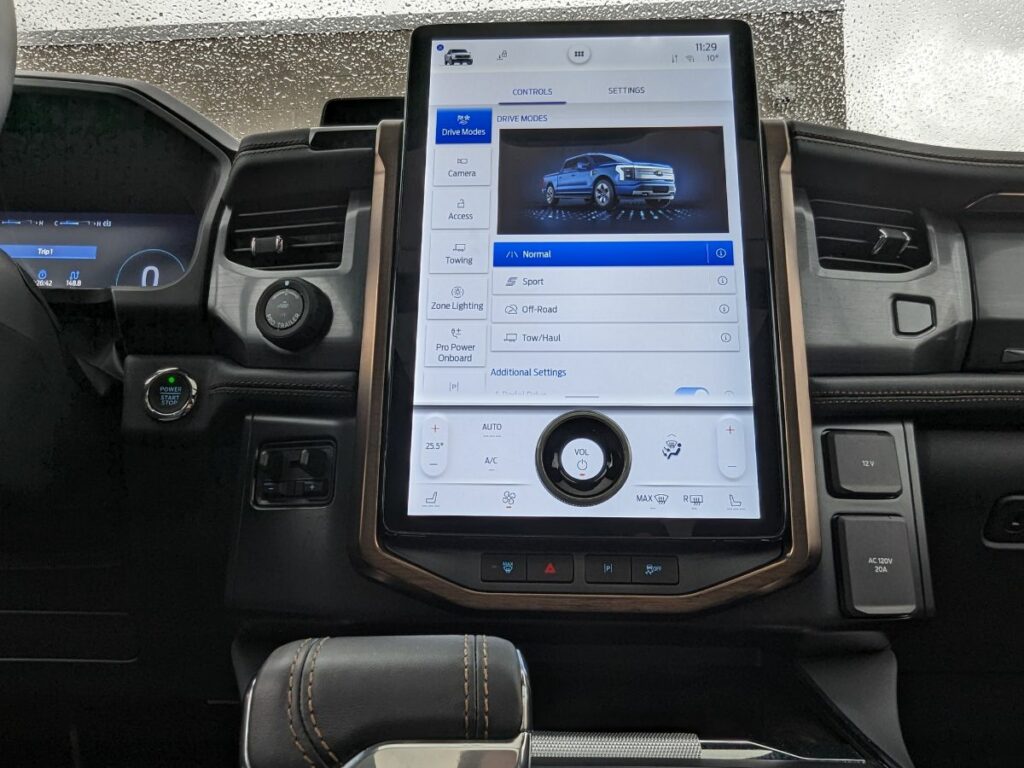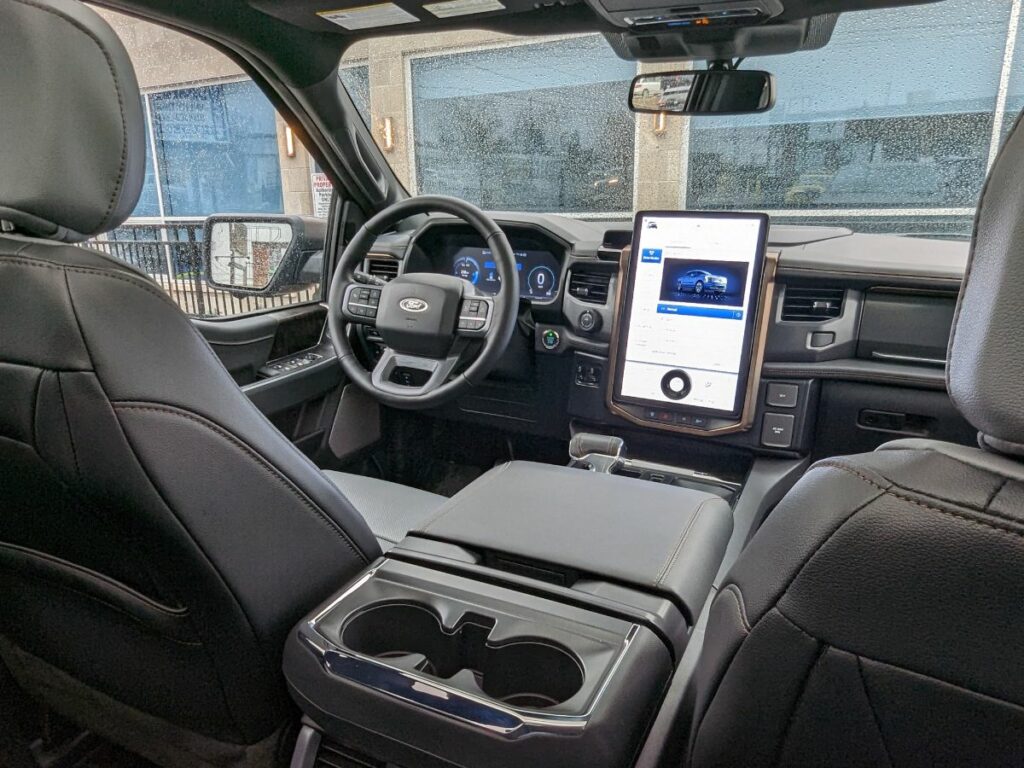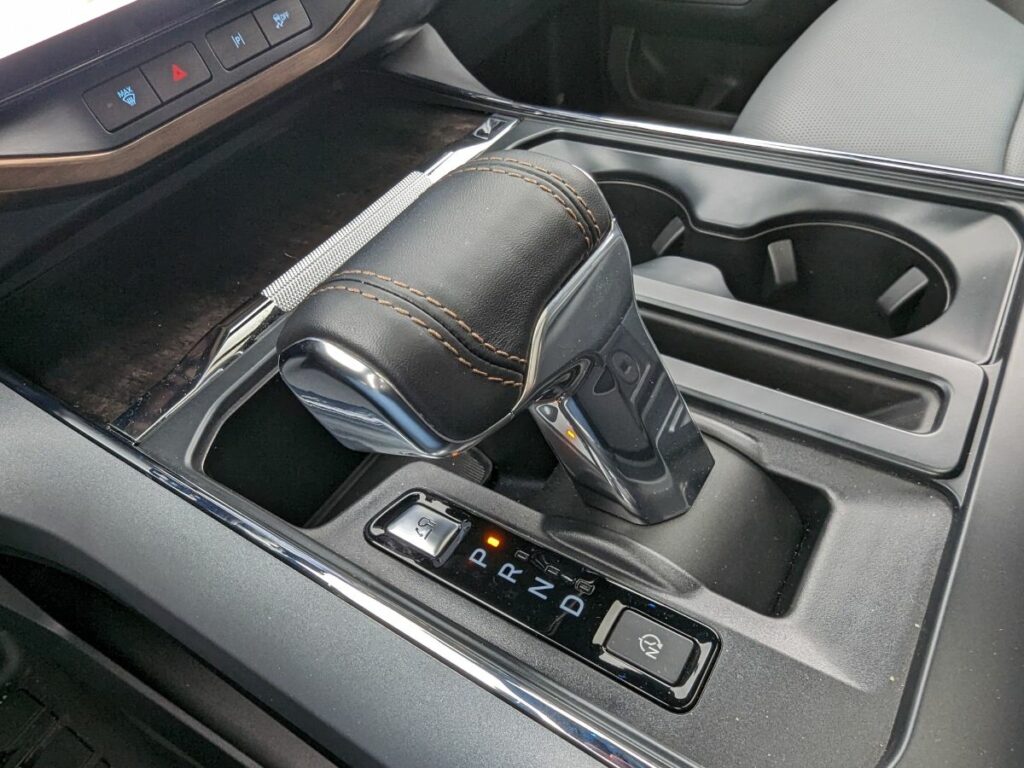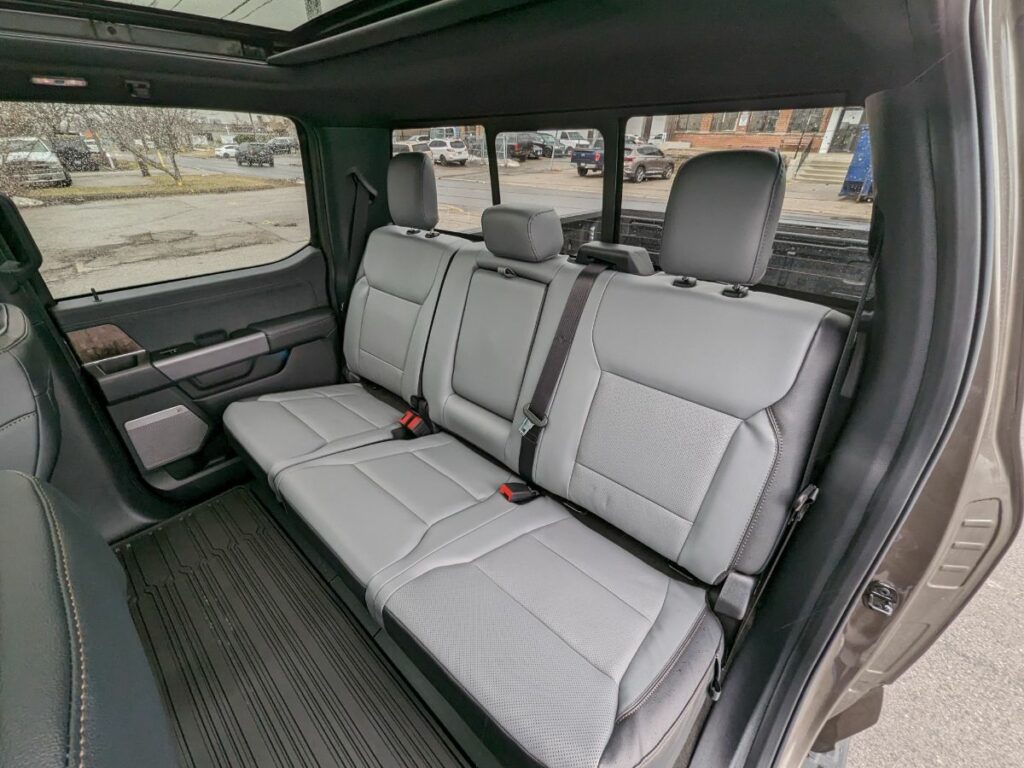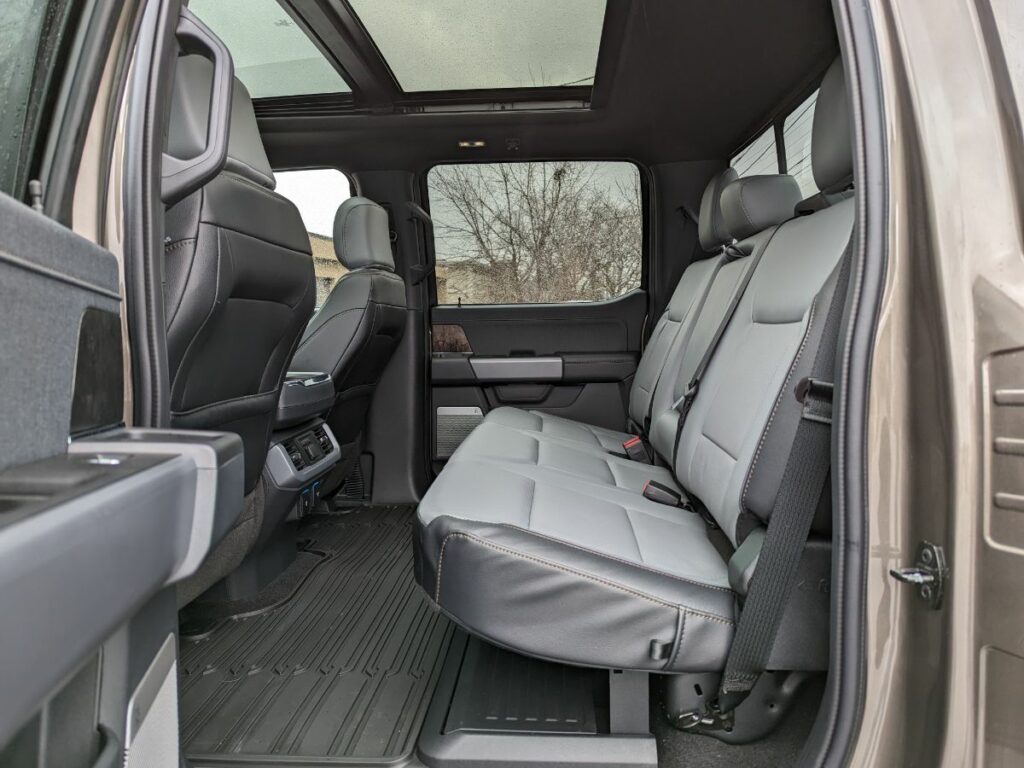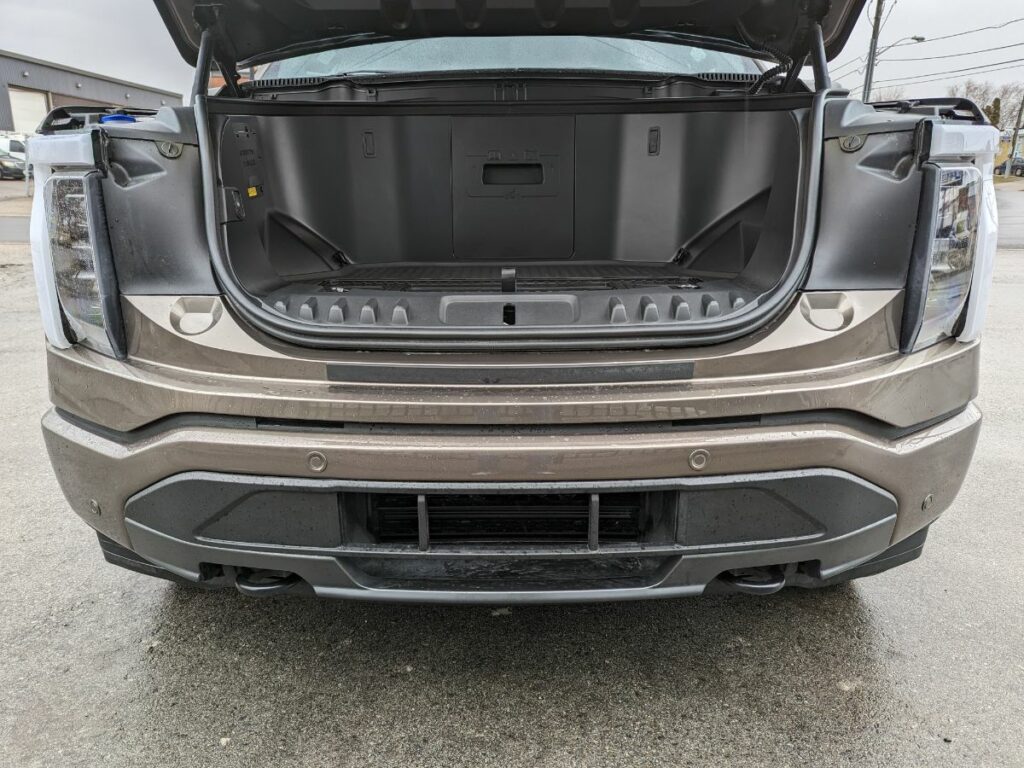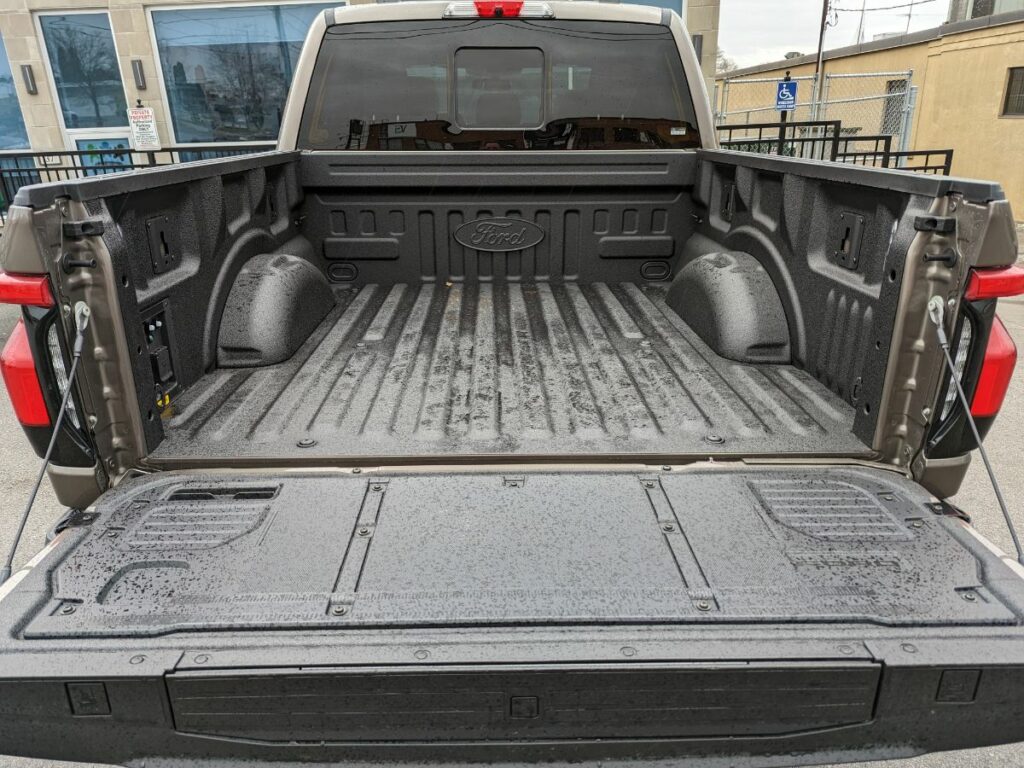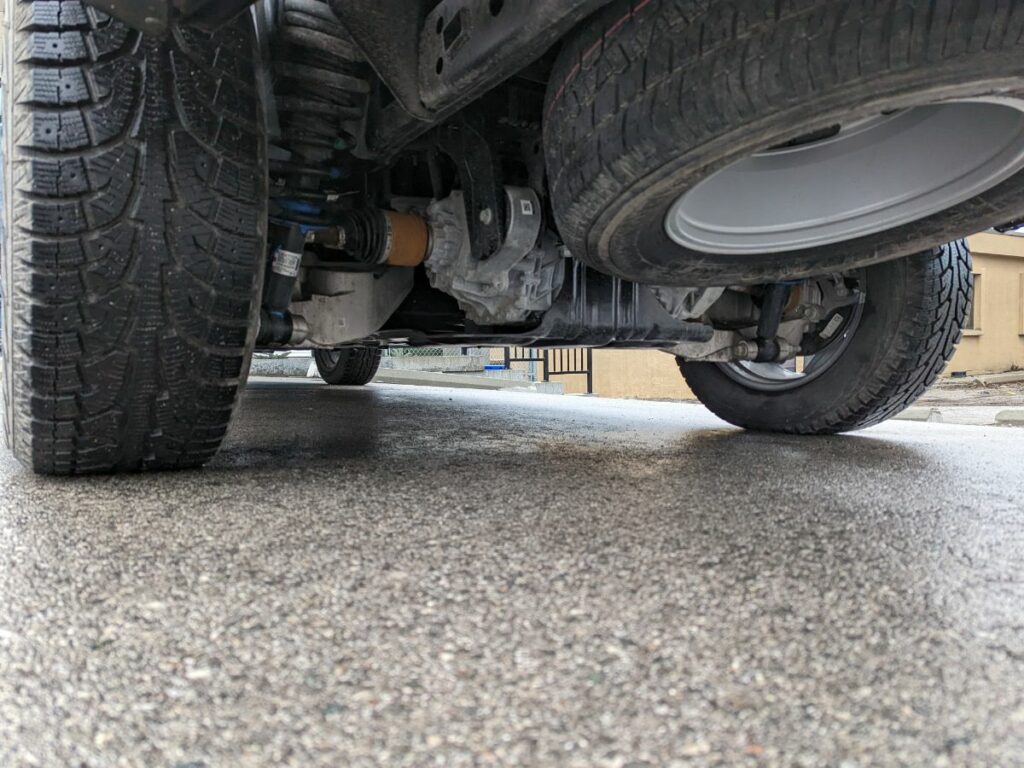We can’t resist a good dad joke- maybe you would rather we said we found it ‘shocking’? No matter which groan worthy attempt at humour we might make, the fact remains that the Ford F-150 Lightning is a masterpiece. It made such a positive impression on us we declared that if we were shopping for an EV, this would be it, hands down. Out of an increasing amount of choices across many brands, we think that the F-150 Lightning is so amazingly brilliant that it would be the one we would put in our own driveways. That’s coming from a sample of the enthusiast population that has made no thinly veiled attempts to disguise our ambivalence towards EVs and pickup trucks in general.
We have not fallen for EVs because we feel that the battery technology they employ simply hasn’t reached its development potential just yet. An even bigger problem exists where the charging infrastructure we live with is concerned. It is so woefully terrible that any thought of buying one stops at either one of those two points, at least in our books.
When it comes to pickup trucks, we get why so many are smitten by them. They are adept in so many situations, whether that be towing, hauling or simply enjoying their unstoppable nature in the face of nasty weather or taking four of your closest friends in comfort on a long road trip or just a short haul for a Costco restock. Yet we never disguise our contempt for the idea that these things be used exclusively as errand runners or hockey practice shuttles. There are not only better choices for the task, but the sheer size and thirst of pickups make them a head scratching choice for those living in urban settings.
The Lightning largely eliminates those two pressing concerns. OK, so it still isn’t a walk in the park when you need to parallel park on a busy one-way street in the downtown core, but you can use it as a commuter or grocery getter to your hearts content because any of the guilt you’d feel doing so in a gas powered model disappears when you consider that the only ‘filling’ required is done at your home charging station.
Ford deserves credit for not only being the first to arrive at the EV pickup truck party (Chevy and Ram are following closely behind with the former becoming available in a few months and the Ram a bit farther away than that) but also for resisting the temptation to make the venerable F-150 weird in any way along its transition to electric power. There are differences that eagle-eyed car and truck watchers will easily spot but for the most part it appears completely normal, just like any other gas powered version of the truck. Obviously there are going to be fundamental differences in the way it drives versus its petroleum fueled counterparts- more on those later- but there is an instant familiarity when you get behind the wheel and drive it. This is something that the vast legions of F-150 customers will no doubt appreciate if they opt to transition from pistons and connecting rods to battery packs on their next truck.
The first thing you notice driving the Lightning is the noise, or the utter lack thereof. It drives so silently that it approaches a Mercedes Benz S-Class in terms of interior noise at speed- seriously. It feels pleasantly odd at first, driving something so large that whispers along during your commute. Another aspect of the Lightning experience which requires a recalibration occurs when you mat the throttle from rest and unleash a torrent of speed that feels ridiculously violent thanks to 580 electrified horsepower and the 775 pounds feet of torque that accompanies it. You hear the front tires squawk while they hunt for traction, but the EV party trick of instant power at zero rpm somehow feels even more giddy when you’re driving a truck. Speaking of Mercedes S-Class, you should know that the Lightning would leave one for dead in a drag race- yes, it’s really that rapid. Watching the exasperated expressions of friends and family members we gave rides to when we called up maximum acceleration never got old. Remember that the Lightning is no lightweight- it tips the scales at a tarmac buckling 3,109 kilos which makes its 0-100km/h time of around four seconds seem otherworldly. Most of that bulk is attributed to the massive 131 kilowatt hour battery that resides in the floor. This is known as ‘skateboard’ architecture which mimics the flat board with wheels mounted at each corner layout, just scaled up for a truck application.
That construction methodology lends a distinct feel when out on the road. Because all that weight is concentrated as low as possible, the Lightning has a dense, planted feel that no gas powered pickup can match. The best way to explain this to someone who is unfamiliar with EVs is that it feels like a giant hand is pressing firmly down on the roof, giving you a more lucid connection with the road beneath you. It also helps the engineers in tuning the suspension with such a robust foundation underpinning the truck.
That suspension is now fully independent. Yes, you read that properly, the Lighting is a full size pickup with each wheel independently sprung from one another. That setup makes for a huge leap forward in terms of ride quality- apologies to the coil-sprung Ram 1500, you are now no longer the reigning champ in this metric. The independent suspenders do a lot of heavy lifting in smoothing out the Lighting’s ride to be sure, but they also bless the truck with something resembling handling chops. Push too hard and the Lighitng will feel like any other full sizer- imprecise and somewhat flummoxed by faster corners and abrupt changes in direction. Yet we couldn’t help but wear a skewed grin when we threw it into a set of sweeping corners we’re familiar with, and darn tooting if it didn’t stick to the road with composure of which the likes we’ve never seen from anything this big and with this much ground clearance. We’d stop well short of labelling the Lightning as canyon carver, but this is the most astutely handling truck we have ever come into contact with.
The last piece of the Lightning’s puzzle where driving dynamics are concerned is the one pedal driving setting on offer. Most EVs will let you customize that with settings raging from non-existent to aggressive. We admit to feeling mildly disappointed when we dug through the Lightning’s menus only to find one pedal driving is either on or off. Yet after spending a day getting dialed to its feel, we think Ford nailed it. It’s so good that we can only recall using the brake pedal in earnest maybe once or twice throughout our entire road test- it is executed better than most other systems we’ve encountered and vastly better than the vehicles built by Elon’s minions. Also, the Lighting ain’t cheap, and Ford hasn’t been shy about adding hefty increases over the last few model years.
Having said that, this seems like a good opportunity to tell you about the stuff we didn’t like, stating with the brake feel. As we just mentioned, the one pedal driving is perfectly set up so this isn’t a major issue. But when you do need the brakes, they take some getting used to- blending friction and regenerative functions together is not the Lightning’s strong suit. That was the most major complaint we found worthy of mentioning- the other, decidedly minor bone we picked with the Lighting was its hilariously antiquated antenna fixed to the top right corner of the hood. There are already two discreetly mounted roof antennas which perform various functions. Why not integrate the old horse whip setup into that area? A minor gripe for sure, but it feels like such a missed opportunity, especially when you consider the effort Ford extended in making this truck look and feel state of the art.
Something occurred to us during our time spent in the F-150 Lightning that seemed to deeply strike a chord in our petrol-based psyche. For so many years, fancied ourselves as ardent defenders of the humble sedan, openly voicing our opinion that pickup trucks do serve a purpose, but that errand running and commuting isn’t one of them. Despite that, we have never shied away from talking about how much we like driving trucks in the right context and that we get why people are so ravenous for them. With all that effusive praise being thrown around, we sheepishly admit to having a chip on our shoulder for people who misuse trucks and then complain that they’re too hard to park and that they guzzle gas with impunity.
How does this grab you: We said so earlier but it bears repeating; not only is the F-150 Lighting the best all-around truck we have ever driven, but it is also the best EV we have ever driven. If we had the means and needed an electrified vehicle this would be the one. Its combination of plush ride, exceptional refinement, exhaustive list of features and of course, the massive thrust the Lighitng is capable of all make for a strong case to put one in our own driveway. Did we mention all this is wrapped up in a go anywhere, do anything pickup truck body style?
And before you pint out that there are other electric trucks that compete against the F-150 that may have caught your eye, note that some of those are more expensive, faster and more cutting edge than the venerable best seller from Ford. Some of them do not even exist yet (coughcough we’re looking at you, Tesla Cybertruck.) For our hard-earned dollars, we’d rather buy a Lightning which was designed and assembled by a company who has been building cars and trucks for over one hundred years instead of a flashy new upstart.
Plus, being the horsepower junkies that we are, our ears perked up at the news that Ford Performance has hinted at hotter version of the Lightning in the pipeline. Details are scarce at this point, but knowing how fast the regular version is, we are super stoked to see what the more powerful model can do. You might even say our excitement is ‘voltaic’. We’ll just show ourselves out…
2023 Ford F-150 Lightning Lariat - Specifications
- Price as tested: $99,815
- Body Type: 4-door, 5 passenger pickup truck
- Powertrain Layout: Front and Rear Electric Motors/All-Wheel Drive
- Battery Capacity/Type: 131-kWh liquid cooled lithium-ion
- Total Horsepower: 589 @ 0 rpm
- Total Torque (lb-ft.): 775 @ 0 rpm
- Transmission: 1-speed direct drive
- Curb weight: 3,109 kg (6,855 lbs)
- Observed Energy Economy: 36kWh/100km


